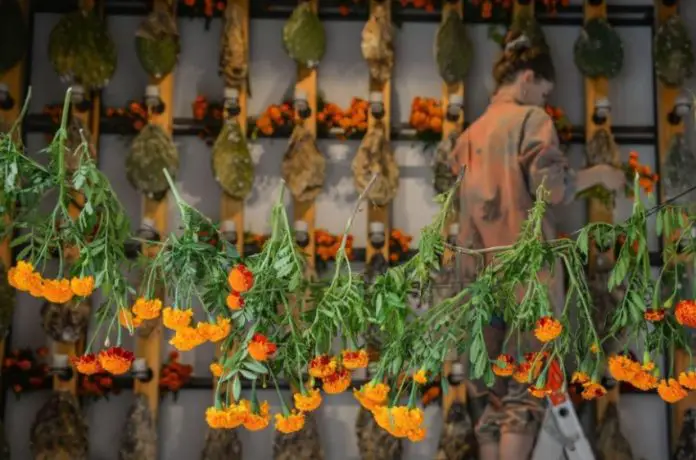By the second week of November, most of the celebrations for Día de Muertos are past, but in Oaxaca, the musky fragrance of marigold flowers still lingers in the air.
Día de Muertos is a vibrant time to visit Mexico and Oaxaca in particular. People celebrate the dead with ofrendas, decorating graves, homes and altars to receive the spirits of their departed loved ones. Offerings include photos of the dead, candles, bottles of mezcal and tequila, food sugar skulls and thousands of orange marigolds, known as in Mexico as cempasúchil.
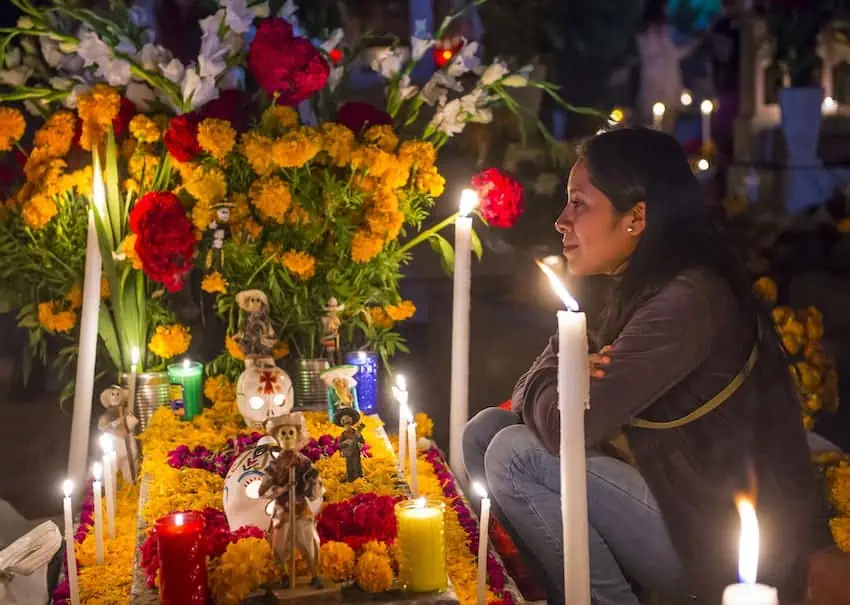
Day of the Dead celebrations can be traced back to the Mexica. They honored the goddess Mictecacihuatl, or the Lady of the Dead, who is said to have allowed spirits to travel back to earth to visit family. They remembered their deceased with offerings, including flowers.
The word cempasúchil, comes from the Nahuatl words cempoalli, meaning “twenty,” and xochitl, or “flower.” Therefore marigolds are the “flower of twenty petals.” The legend goes that these flowers were gifted to the Mexica people by the sun god, Tonatiuh, so that they might honor their dead.
Flowers symbolize the brief, ephemeral beauty of life. They are an essential element of the Day of the Dead ofrenda. They are used in the construction of the floral arches, garlands, wreaths and crosses. As well as decorative uses, these sun-colored flowers are also used in Day of the Dead rituals.
Though many different flowers are used in Day of the Dead celebrations, cempasúchil is particularly significant.
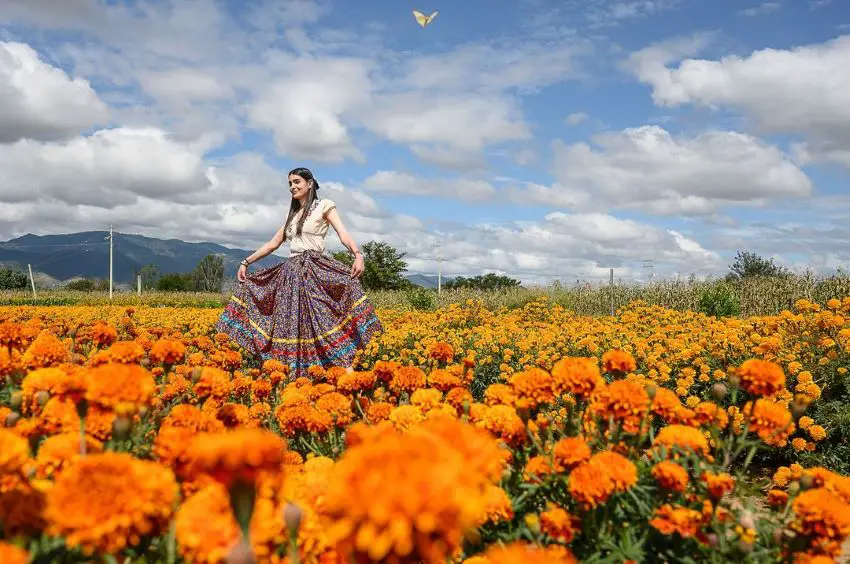
With their bright color and rich fragrance, cempasúchil are believed to attract souls of the dead. Families will scatter the orange petals to lay a path from their front doors to the home altar. In smaller towns, people may create a floral path from the cemetery to their front doors guiding the dead back home.
The petals of the marigold are also thought to have cleansing properties. A cross on the floor allows for souls to be cleansed when they pass it.
Visiting the beautifully adorned altars and giving cempasúchil as offerings is how visitors can respectfully participate in the Day of the Dead celebrations. Building your own altar to celebrate past loved ones is also a thoughtful way to immerse in this tradition.
Once the Days of the Dead have past, the vivid altars, arches and garlands of bright cempasúchil are taken down. Although fresh flowers may be fading, they can still be saved and used. Drying and storing the flowers can be a great way to decorate the next year. They will hold some of their color and musky odor.
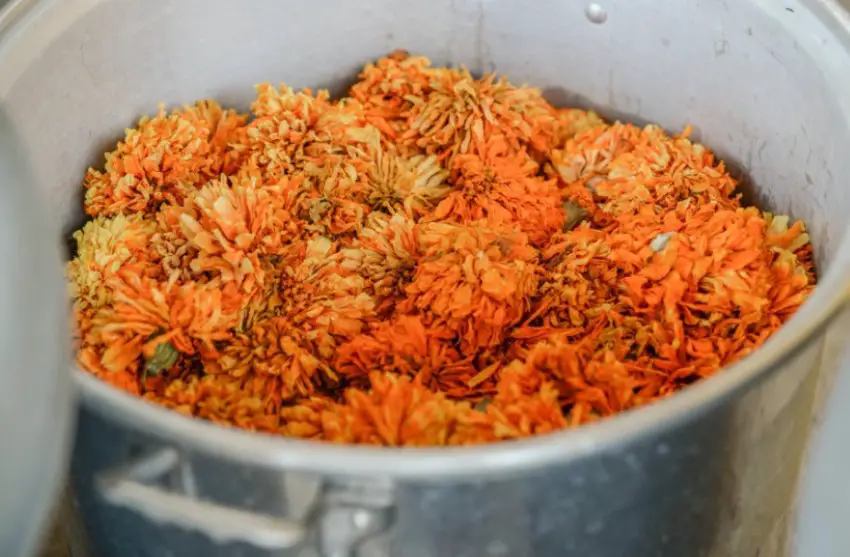
Dried cempasúchil can also be used for dyeing textiles. If you visit the weaving town of Teotitlán del Valle, Oaxaca following Día de Muertos, you will find piles of these orange flowers. They are allowed to dry and used year round to make a deep yellow dye.
To extract the dye you just need to add the dried flowers to boiling water, like a big pot of tea! After just a few moments the yellow dye emerges from the flowers. To get a bold result of dyeing cotton, you need to prepare the fabric using a mordant, then just add to the pot of stewing flowers. After about an hour you should have a rich yellow textile.
As well as the traditional, artisan work found in Teotitlán del Valle, many contemporary Oaxacan designers explore dyeing with cempasúchil at this time of year. Orígen Textil produces beautiful garments, as well as offering workshops to learn about using natural dyes like cempasúchil.
Cempasúchil flowers can also be infused to make a tea — or a syrup for a seasonal cocktail. They can also be distilled with agave to make a delicious style of mezcal. The process of making mezcal distilled with flowers bears some similarity to the traditional ‘pechuga’ mezcals, also made following Day of the Dead.
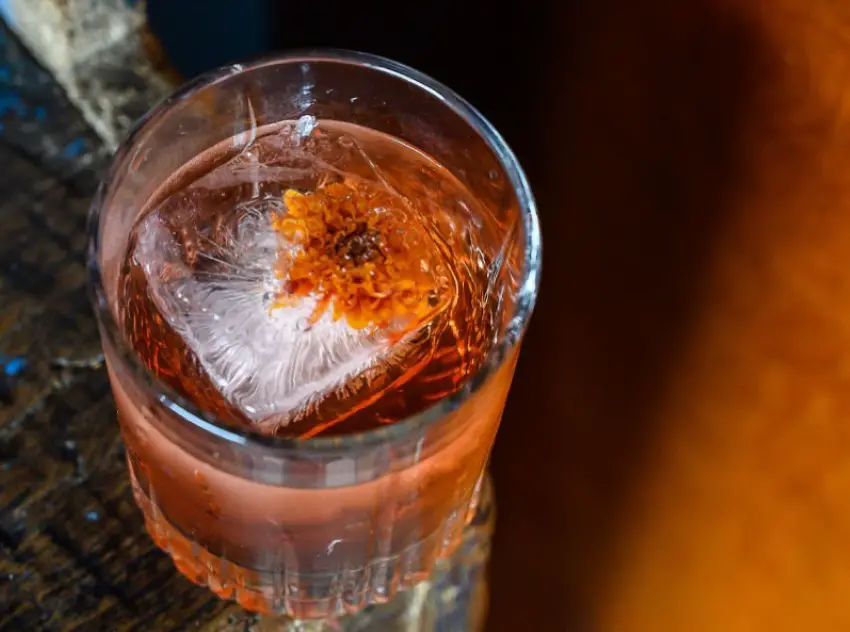
Adding the petals, or whole flower heads to the distillation of agave will lend the final spirit amazing floral aromas and a complex taste profile reminiscent of ‘amargo’ spirits. It is delicious as a sipping mezcal or mixed into refreshing cocktails.
Mezcal brands like La Jicarita, Bozal and Salvadores have been producing this cempasúchil spirit.
Speaking to Salvadores founder Sal Palacios, he explained that their cempasúchil edition was inspired by Day of the Dead. “The aromas of the cempasúchil during Día de Muertos really brings nostalgia in my heart. So I decided to make a spirit distilled with cempasúchil, with tejocote and mandarins.”
He enjoys drinking the Salvadores Cempasúchil neat, in a vela glass, “taking the time for the mezcal to speak to me, bringing memories.”
Brooks Bailey designs cocktails for Rambling Spirits. He suggests using the Salvadores cempasúchil as the base for your negroni, with campari and dry white vermouth, garnished with a spray of expressed orange zest. Freeze a marigold flower in the ice cube to make this cocktail extra special!
Anna Bruce is an award-winning British photojournalist based in Oaxaca, Mexico. Just some of the media outlets she has worked with include Vice, The Financial Times, Time Out, Huffington Post, The Times of London, the BBC and Sony TV. Find out more about her work at her website or visit her on social media on Instagram or on Facebook.
